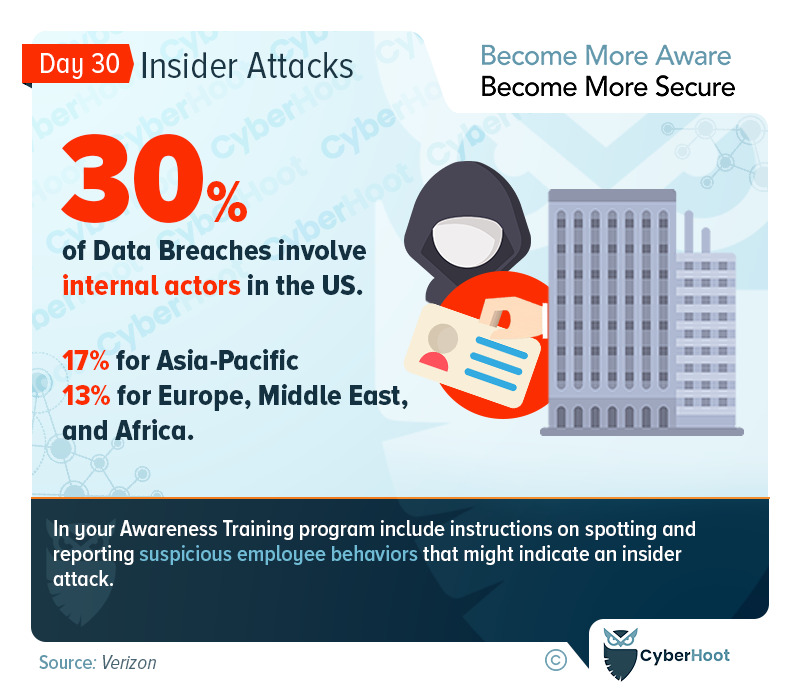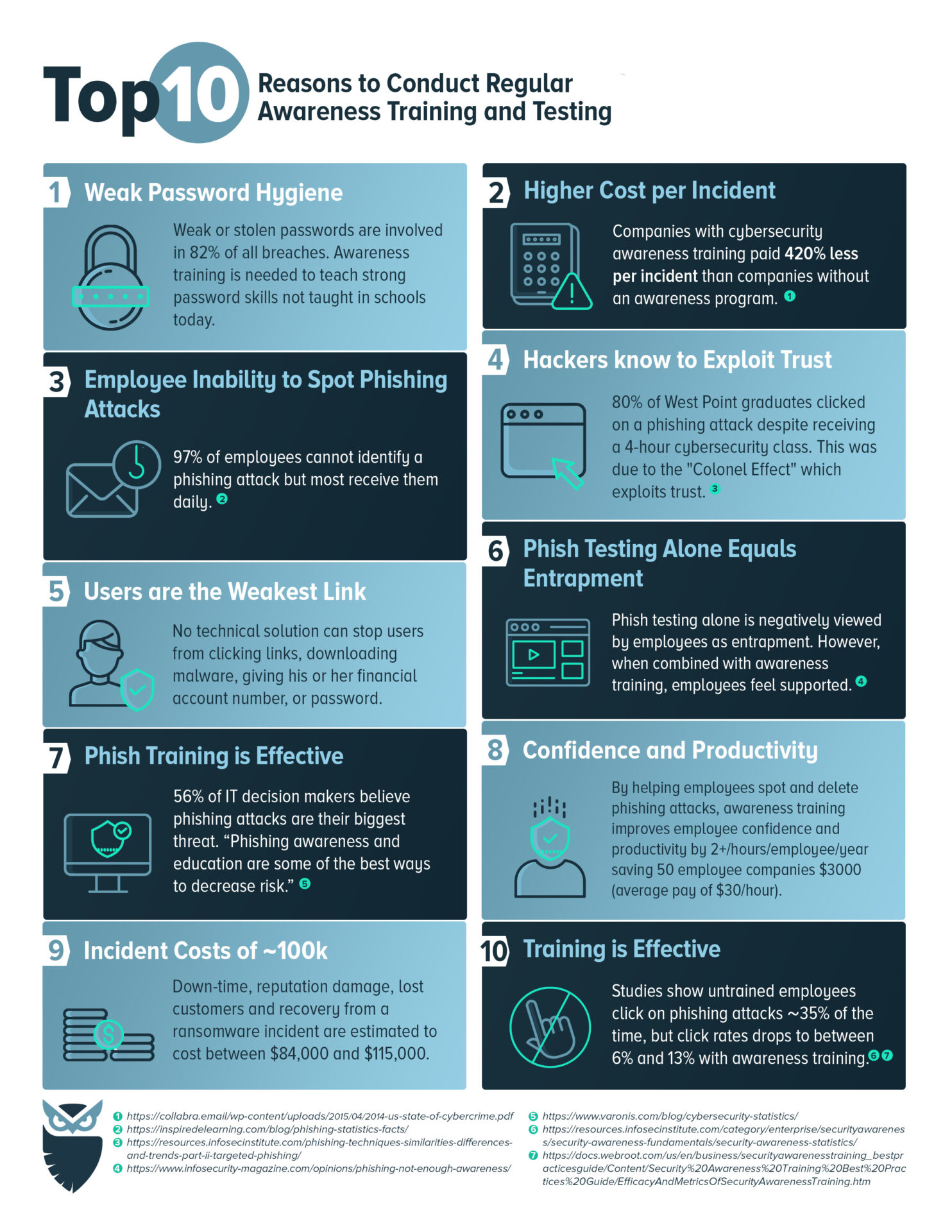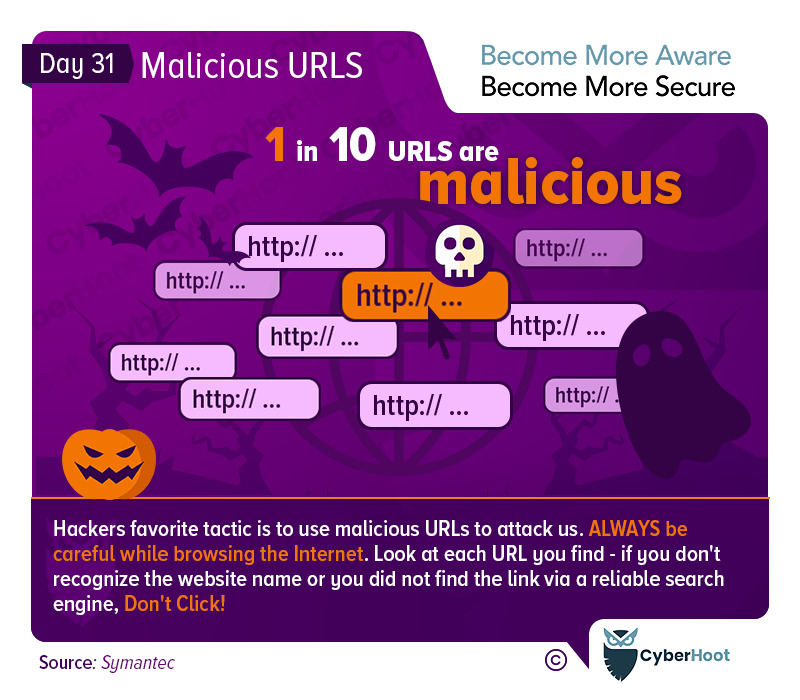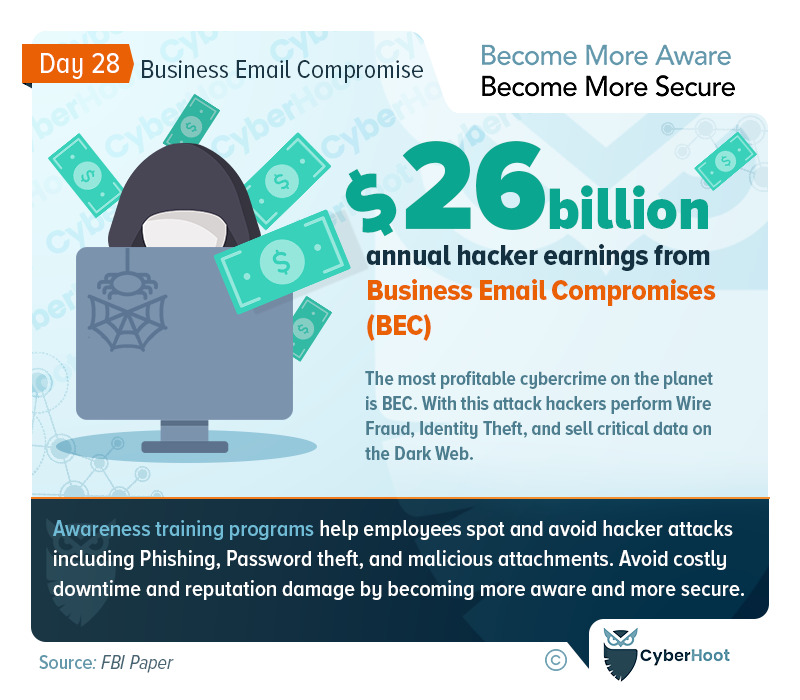What damage can result from internal attacks?
Every year since Covid hit, workers have been quitting in ever-increasing numbers. Finding strong replacement candidates can be difficult. But did you know that there are other costs to your business from employees who leave? You see, many of them work remotely and transfer your critical and sensitive information on their equipment at home outside of your ability to recover the data when they leave.
Others may be more daring and seek to sell your proprietary and critical information on the dark web, or directly to your competitors. While this may seem unfair to you, and we’d all like to think that everyone we hire will be genuine and loyal, it never hurts to learn how to spot and check for malicious internal behaviors that could lead to damages to your company. CyberHoot provides insider attack training as part of its basic training courses. Sign up and educate your employees on how to identify and report suspicious internal behaviors!
With CyberHoot you can learn about much more than insider threats. You’ll learn about password hygiene, why password managers are so important, and how to spot and avoid phishing attacks. Additionally, you can hire our vCISOs to help you implement all of the cybersecurity best practices listed below.
CyberHoot Best Practices:
- Train your employees on the common attacks out there. From weak passwords and password managers, to the importance of multi-factor authentication and how to spot phishing attacks. Awareness is the key to protecting your business.
- Control your employees with a cybersecurity policy, including acceptable use, password, information handling, and a written information security policy.
- Establish cybersecurity best practice processes, such as the Vulnerability Alert Management Process (VAMP) and the Cybersecurity Incident Management Process (CIMP) to guide and require emergency action. Then move on to the onboarding and offboarding processes, SaaS management processes and third party risk management.
- Create strong technical defenses including: firewall, anti-virus, anti-malware, anti-spam, multi-factor authentication on all critical accounts, enable full disk encryption, manage keys carefully, and most importantly, adopt, train and require all employees to use the manager Passwords.
- Test employees on how to spot and avoid phishing attacks. CyberHoot has released a disruptive method of Phish Testing to fill your employees’ knowledge gaps without punishing them for failure. Instead we reward them for success. More information is available here.
- Back up your data by following our 3-2-1 backup methodology to ensure you can recover your business from a cyber security incident.
- In the modern age of working from home, make sure you manage personal devices that connect to your network by verifying their security (patching, antivirus, DNS protections) or completely banning their use.
- If you haven’t had a third-party risk assessment done in the last two years, you should do it now. Establishing a risk management framework in your organization is critical to addressing your most difficult risks in your final time and money.
- Buy cyber insurance to protect you in the event of a catastrophic failure. Cyber insurance is no different than car, fire, flood or life insurance. It’s there when you need it most.
CyberHoot believes that for many SMBs and MSPs, you can greatly improve your defenses and the chances of not becoming another victim of a cyber attack if you follow the advice above.









